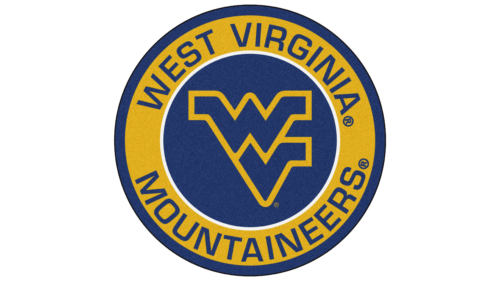 West Virginia Mountaineers Logo PNG
West Virginia Mountaineers Logo PNG
The creative West Virginia Mountaineers logo reflects the geographic character of the state, which is famous for its mountain ranges and beautiful forests. But its primary function is to represent the sporting values of team spirit, strength, and endurance. It creates an impression of reliability and unity, for these are the qualities that underlie victories.
West Virginia Mountaineers: Brand overview
| Founded: | 1867 |
| Headquarters: | Morgantown, West Virginia, United States |
| Website: | wvusports.com |
Like any American university, West Virginia University has its own sports department. It is located in Morgantown and consists of 18 teams. Their representatives compete in the Division I National Collegiate Athletic Association, are members of the Big 12 Conference, and participate in the Mid-American Conference. Football players (who first entered the field in 1891), basketball players (playing since 1903), and rifle shooters achieved the most striking success. The most famous West Virginia Mountaineers logo is the Flying WV, designed by John Martin. Home sports grounds are Milan Puskar Stadium and WVU Coliseum.
At first, the university was in no way connected with sports, creativity, or other events. The reason was the obligatory daily services held in the chapel and the frequent roll call of the students. But after their cancellation, students began to conduct active extracurricular activities: they organized interest groups and held sports competitions. As a result, the guys became interested in football and created their group. This happened in 1891. This event gave impetus to the emergence of various teams.
Meaning and History
The university named its sports program Mountaineers, choosing the historical nickname of everyone who lives in West Virginia. Due to the presence of mountains, this region has long been called the Mountain State, and the representatives of its population – Mountaineers. This word is partly used in the logo – the initial letter “M.” The WVU teams got this name in 1927 and the modern tacit name of the Flying WV logo in 1980. This option arose due to a change in the image of the players when they updated the form. Generally speaking, the West Virginia Mountaineers have four logos.
What is West Virginia Mountaineers?
West Virginia Mountaineers is a sports department that belongs to West Virginia University. It includes 18 men’s and women’s teams representing different sports. The most successful among them are football and basketball. Athletes play in the Division I NCAA and compete in the Big 12 Conference. Their home arenas are Milan Puskar Stadium and WVU Coliseum.
1928 – 1937
The first logo is textual. It contains an abbreviation of the full name of the sports department. The letters are thin and tall and form a geometrically precise composition. In the center is a “V” with an elongated bottom, which looks like a slingshot. On the left is “W,” and on the right – is “U.” The designers made them visually the same, so both the initial and the last letters look like barrels. All glyphs are capital and blue.
1970 – 1980
This variation of the West Virginia Mountaineers logo is also based on the shortened name. But if earlier the abbreviation did not have a special background, now it does. An oval yellow soccer ball plays this role with a blue edging line. In turn, it serves as the background of the administrative map of the state. The letters are even placed on a ladder and complemented by a white border.
1980 – 2016
Coach Don Nehlen undertook a redesign of the football kit, which was followed by the Flying WV badge, designed by artist John Martin. This is how the next logo of the sports department from West Virginia University appeared. He became the most recognizable and legendary. The emblem is based on the first two letters of the state name: “W” and “V.” They are harmoniously combined – as if inserted into one another, repeating the contours of the lines. The letters are wide, gold, with a blue edging and extensions on the sides.
2016 – today
In the modern version of the logo, a small space is left between the top “W” and the bottom “V.” It appeared because the designers removed the border, keeping both characters in the same position as before. In addition, the gold color has disappeared: the glyphs have been recolored in dark blue. The tops of the letters have become a little sharper.
Font and Colors
In the example of the West Virginia University logo, you can see an amazing “reverse” trend. The fact is that the graphic symbol from the uniform of the football team, in an incredible way, first turned into the emblem of the sports department and then was adopted as a university sign (in 1983). The unifying factor for all elements of WVU’s visual identity is color.
Each logo of this sports program uses individual fonts. Moreover, the letters are drawn rather than written, so they can be called graphics. The color scheme features #EAAA00 gold and #002855 navy blue, which are university-wide.
West Virginia Mountaineers color codes
| Blue | Hex color: | #002855 |
|---|---|---|
| RGB: | 0 40 85 | |
| CMYK: | 100 53 0 67 | |
| Pantone: | PMS 655 C |
| Gold | Hex color: | #eaaa00 |
|---|---|---|
| RGB: | 234 170 0 | |
| CMYK: | 0 27 100 8 | |
| Pantone: | PMS 130 C |









